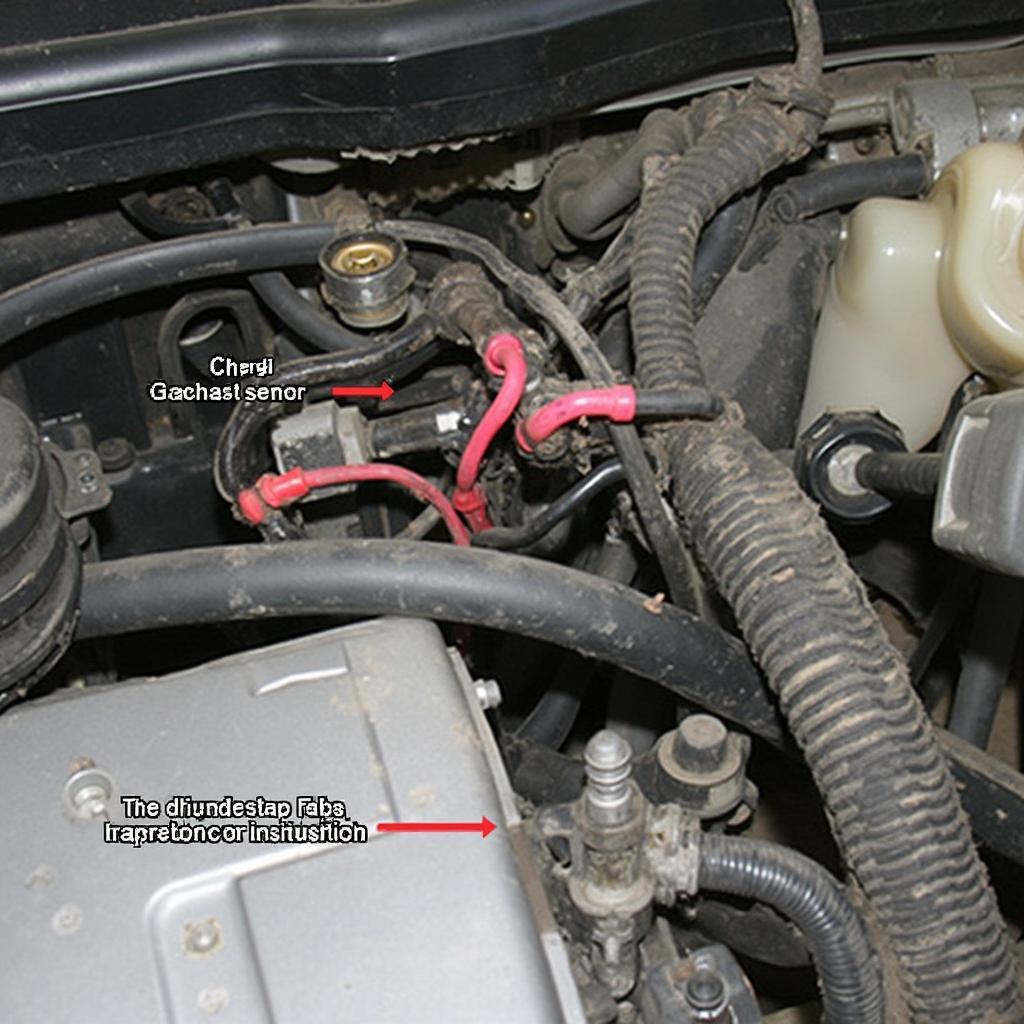The OBD2 P0340 code indicates a problem with the camshaft position sensor circuit, a vital component for engine performance. This article delves into the causes, symptoms, diagnostic procedures, and solutions for this troublesome code, helping you get back on the road quickly and safely. Understanding the P0340 code is crucial for any car owner or automotive professional.
Understanding the OBD2 P0340 Code
The camshaft position sensor (CMP) tells your car’s computer (ECM) the position of the camshaft, which is essential for timing fuel injection and ignition. When the ECM detects a problem with the signal from the CMP sensor circuit, it triggers the P0340 code. This can lead to a variety of performance issues and even prevent your car from starting. This code specifically refers to a problem in the “A” circuit of Bank 1, which typically refers to the side of the engine containing cylinder #1.
Causes of the P0340 Code
Several factors can contribute to a P0340 code. These range from simple issues like loose wiring to more complex problems like a faulty sensor or ECM. Here are some of the most common culprits:
- Wiring issues: Damaged, corroded, or loose wiring in the CMP sensor circuit is a frequent cause.
- Faulty camshaft position sensor: The sensor itself may be defective due to age, wear, or damage.
- Timing issues: Problems with the timing belt or chain can affect the sensor’s readings.
- Damaged crankshaft position sensor: While not directly related, a faulty crankshaft position sensor can sometimes indirectly trigger a P0340 code.
- ECM malfunction: In rare cases, the ECM itself can be the source of the problem.
Symptoms of a P0340 Code
The symptoms of a P0340 code can vary depending on the severity of the problem. Some common signs include:
- Check Engine Light: The most obvious symptom is the illuminated Check Engine Light.
- Difficulty starting: The engine may crank but fail to start, or it may take longer than usual to start.
- Rough idling: The engine may idle roughly or inconsistently.
- Reduced engine performance: You might experience a loss of power, especially during acceleration.
- Poor fuel economy: A decrease in fuel mileage can be a sign of a P0340 code.
- Stalling: The engine may stall unexpectedly, particularly at idle or low speeds.
Diagnosing the P0340 Code
Diagnosing the P0340 code requires a systematic approach. Here’s a step-by-step guide:
- Retrieve the code: Use an OBD2 scanner to confirm the P0340 code and check for any other related codes.
- Inspect the wiring: Visually inspect the wiring and connector for damage, corrosion, or looseness.
- Test the sensor: Use a multimeter to test the resistance and voltage of the camshaft position sensor.
- Check the timing: Inspect the timing belt or chain for proper alignment and tension.
- Test the ECM: If all other components check out, the ECM may need to be tested.
Fixing the P0340 Code
Once you’ve diagnosed the cause of the P0340 code, you can take appropriate action to fix it. This may involve:
- Repairing or replacing wiring: Damaged or corroded wiring should be repaired or replaced as needed.
- Replacing the camshaft position sensor: A faulty sensor needs to be replaced with a new one.
- Correcting timing issues: Adjust or replace the timing belt or chain as required.
- Replacing the ECM: If the ECM is faulty, it will need to be replaced and reprogrammed.
“A common mistake is assuming the camshaft position sensor is always the culprit. Thorough diagnostics are crucial to avoid unnecessary replacements,” advises John Smith, Senior Automotive Diagnostician at Advanced Auto Diagnostics.
Conclusion
The OBD2 P0340 code can be a frustrating issue, but understanding its causes, symptoms, and solutions can help you resolve the problem efficiently. By following the diagnostic steps outlined in this article and addressing the underlying cause, you can restore your vehicle’s performance and prevent further damage. Remember to address the P0340 code promptly to avoid potential complications.
FAQs
-
Can I drive my car with a P0340 code? It’s not recommended. Driving with this code could lead to further damage or leave you stranded.
-
How much does it cost to fix a P0340 code? The cost varies depending on the specific cause and repair required, ranging from a few dollars for a wiring repair to several hundred for a sensor or ECM replacement.
-
How can I prevent a P0340 code? Regular maintenance, including inspections of wiring and sensors, can help prevent this code.
-
Is the P0340 code the same for all car makes and models? While the code generally indicates the same problem, specific diagnostic and repair procedures may vary between vehicles.
-
What tools do I need to diagnose a P0340 code? An OBD2 scanner and a multimeter are essential tools.
“Regular maintenance is key. Inspecting your wiring and sensors can prevent many issues, including the dreaded P0340,” adds Maria Garcia, Certified Mechanic at Expert Auto Repair.
Common Scenarios for P0340 Code
- Intermittent starting problems: The car sometimes starts fine, but other times it struggles or won’t start at all.
- Poor performance after a recent repair: The P0340 code appears after working on the engine, suggesting a possible mistake during the repair process.
- Engine light comes on after driving through water: Exposure to water may have damaged the sensor or wiring.
Related Articles and Resources
- Understanding OBD2 Codes
- Common Camshaft Position Sensor Problems
- DIY Car Maintenance Tips
Need further assistance? Contact us via WhatsApp: +1(641)206-8880, Email: [email protected]. We have a 24/7 customer support team ready to help.


